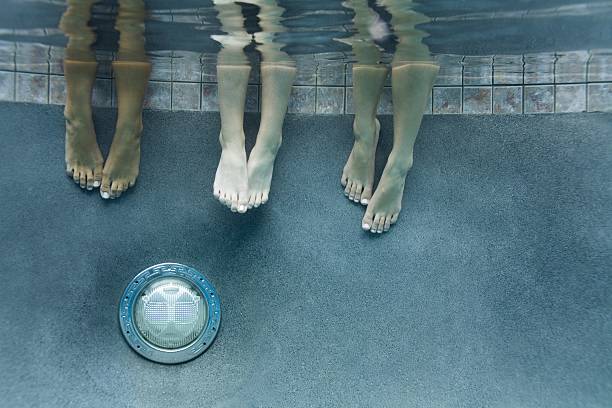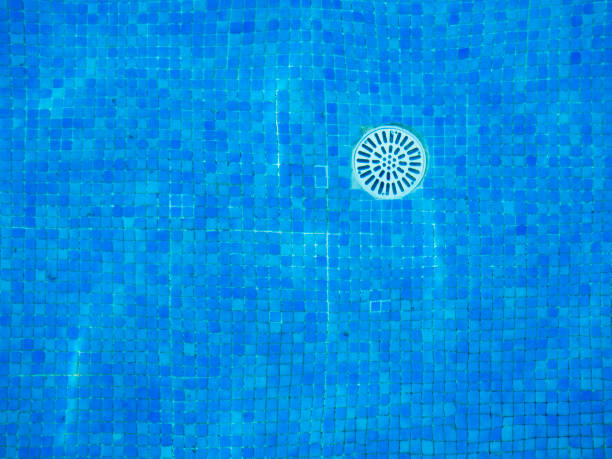How to Drain an Above Ground Pool?
Is it time to drain your above-ground pool? Perhaps it’s full of filthy, stagnant water. Perhaps you need to remove it altogether for the season or perform emergency repairs. In any case, you’ll need to drain part or all of the water from your pool. And, if you’ve never drained your pool before, doing it incorrectly might damage your pool liner or, worse, cause the entire structure to collapse.
Here’s how to drain an above-ground pool, either with or without a pump. The video instruction is shown below. Alternatively, continue reading for a comprehensive pool draining guide.
When Should You Drain an Above Ground Pool?
There are just a few instances when you will need to entirely empty your pool. Depending on the size of your pool, you should only ever need to partly empty it, even to repair leaks. However, there are many occasions in which you should drain most or all of your water:
1. Your water chemistry is out of balance.
Maintaining your pool’s water chemistry is an important part of routine pool upkeep. Even if you maintain your pool meticulously, you might end up with a buildup of total dissolved solids (TDS). These are the byproducts of all the chemicals you use to keep your pool clean, which gradually accumulate over time. When the TDS level in your pool exceeds 2,500 parts per million (PPM), you must remove and replace some of the water with new water.
Another reason to change the water in your pool? Your Cyanuric Acid (CYA) levels are very high. The only option to reduce those levels is to partially empty your pool and refill it with new water.
2. You must do structural repairs.
Most pool repairs may be completed without draining the whole contents of your above-ground pool. You may even patch and replace your pool liner while it’s still submerged. However, special upkeep may need an empty pool. This covers tasks such as totally replacing your pool liner or rebuilding the foundation of your pool structure.
3. You must store your pool over the winter.
If you live in a cold region and have a smaller above-ground pool, you may need to drain and store it during the winter. Not only will this protect your pool from freezing conditions, but it may also be necessary to store your pool during the off-season in order to maintain your warranty.
What You Will Need When Draining an Above Ground Pool?
Draining your pool using a submersible electric pump, also known as a sump pump, is significantly faster than using a garden hose. If you have to empty your pool every winter, a sump pump might be a good investment. However, if this is a one-time task and you want to save money, you may rent one from a local hardware shop.
- Submersible pumps (aka a sump pump)
- A water hose
- A shop vacuum (optional)
Make sure your sump pump’s power line is long enough to reach the bottom of the pool from the nearest outlet. While an extension cable can be used, it must be strong enough to support a sump pump.
How to Drain an Above Ground Pool?
Here are two easy ways to accomplish the task: with a pump and with a hose siphon.
Method 1: Pump
You only need a medium-sized water or vacuum pump.
- Unroll the pump’s input hose and submerge it in the pool until it reaches the middle of the pool (or as near to it as feasible).
- Install the outlet hose so that the outgoing water does not overwhelm the area but instead drains away from the pool.
- Dry your hands completely.
- Plug the pump’s power cable into an electrical socket and turn it on.
- Check that the pump is working properly and then turn it on.
- Check the operation on a regular basis, and keep an eye on the water level. The process might take many hours depending on the size of the pool and the velocity of the pump.
- When the water level becomes too low for the pump to drain, turn it off. Graves is the source.
Method 2: Using a hose siphon
- To empty the pool, you’ll need at least one garden hose. The faster the pool drains, the more hoses you utilize. A word of caution: don’t initiate the siphon process with your mouth, or you’ll wind up swallowing pool water.
- Submerge each hose entirely in the pool, allowing it to fill completely.
- Remove one end of each hose from the pool and set it on the ground. Make certain that the opposite end of the hose is submerged. The time it takes to drain the pool is determined by the volume of water, the number of hoses, and the hose diameter [source: LevelGroundPool].
Remove any residual water by either removing the drain cap (if there is one) or disassembling the pool until the liner is free. Either turn over the liner or brush out the water to drain the pool.
How to Drain an Above-Ground Pool Without a Pump
If you’re just partially emptying your pool or don’t want to use a pump, you may siphon off the water using a garden hose. It will take longer than using a pump, but this simple, do-it-yourself solution eliminates the need to purchase or rent any equipment.
The simplest approach to make a siphon is to immerse the full garden hose in water and then remove one end of the hose from the pool:
- Submerge the hose completely in the pool. Keep both ends submerged until the air bubbles cease. This indicates that the hose is presently full with water.
- Place your hand over one of the hose’s ends. Pull the hose out of the water while keeping that end covered.
- Place the end you’re holding on the ground below the pool’s waterline. When you remove your hand, the water should begin to drain. The hose on the pool’s outside must be lower than the pool’s water level. Also, be certain that the end that is in the water remains beneath the surface.
If your water level is too shallow for this procedure or you aren’t obtaining a siphon, you may speed up the process by connecting your garden hose to the spigot on your house (or outdoor faucet).
How to Use a Drain Adapter to Drain an Above-Ground Pool
A drain adapter may be included with your Intex, Coleman, or other temporary above-ground pool. This allows you to empty the pool more quickly if you need to remove it at the end of the season.
- Before opening the value, connect the drain plug to a garden hose. Without a hose, water will drain around and beneath the pool, softening the land on which it is built. To connect your garden hose to your pool, you may require an adaptor.
- Place the garden hose’s other end away from the pool. Check that it isn’t leaking onto a neighbor’s yard.
- Keep an eye on the water flow. You may need to reposition your hose from time to time depending on how many gallons of water your pool holds. Keep in mind that your water should not be draining into a storm sewer.

Conclusion
That is all there is to it.
If you’re only emptying your pool half, I suggest the cut siphon approach because it’s a bit easier to manage.
When you’ve drained all of the desired water, just insert the open end back into the pool.
